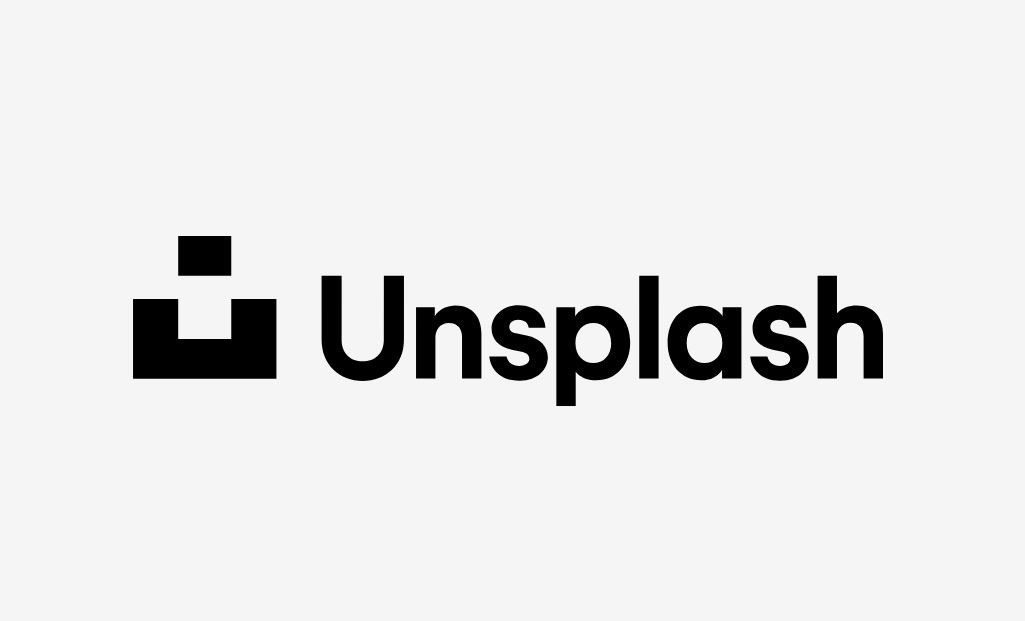Concerns are mounting regarding Unsplash’s terms and image licensing after the site launched its official WordPress plugin this week. Several people commented on the restrictions and lack of clarity in the license.
“The irony here is that this goes against Unsplash’s own licensing for images,” Aris Stathopoulos commented. “It’s vague and restrictive to the point where one doesn’t even know if they can actually use the images they import.”
Matt Mullenweg responded to Stathopoulos’ comment, saying, “I agree, not sure if this should be allowed in the directory.”
The last time the site made a major splash in WordPress news was in 2017 after revising its license to prohibit the compilation of photos for the creation of a similar or competing service. Its new branded license made the library’s images incompatible with the GPL and unable to distributed with WordPress themes and plugins.
Unsplash co-founder Luke Chesser believes these comments are due to a misunderstanding about the license change.
“As you know, themes have a requirement that themes and their content be GPL compatible,” Chesser said. “Outside of themes, WordPress’s application of GPL doesn’t apply to content in plugins. That’s why you can have a YouTube plugin, a Getty Images plugin, a Giphy plugin, etc. — none of this content is licensed under GPL. In most cases plugins serve content that has a very narrow usage license, much, much more restrictive than the Unsplash License.”
Why Unsplash Abandoned Creative Commons Zero Licensing
To understand the sensitivity to Unsplash’s licensing change, one must dust off a bit of web history. When the site first started in 2013, the images were licensed under the very permissive Creative Commons Zero license. It quickly grew from a Tumblr-hosted photo blog that shared “10 new photos every 10 days” for free, to one of the most popular photo libraries on the web.
Chesser said the real life problems the Unsplash community encountered caused his team to change the licensing to protect photo authors.
“People were downloading the images and reselling them on Getty and Shutterstock,” he said. “Even if the people doing this made no money, it was such a negative experience for Unsplash contributors that they would remove their images from Unsplash, removing content that was previously available to openly be created with.
“Scraping of the site and the library had a similar effect as contributors would see their photos copied over to thousands of free image sites they never signed up for, or worse, their photos being made available to other sites with no attribution.”
Unsplash contributors were likely not fully aware of the freedoms that the CC0 license affords. These problems may be undesirable applications of the license but they were not outright misuses. When Unsplash changed its license, approximately 200,000 images were no longer identified on the site as being part of the public domain.
Creative Commons got involved after the organization started receiving questions from users in the open content and free software movements. Ryan Merkley, CEO of Creative Commons at that time, penned an update on Unsplash’s licensing change to the CC community, expressing the organization’s concerns.
“Our intention is to ensure that CC community members understand what has happened to a service they have been using that incorporated CC tools, and to protect the content that was dedicated to the public domain,” Merkley said.
Creative Commons called on Unsplash to properly differentiate the works that were previously shared under the irrevocable CC0 license so that they would not disappear from the public domain:
Following the switch to the new Unsplash-branded license, there is no marking of works that were previously shared in the public domain using CC0. The Unsplash API restricts/obscures the full CC0 collection, which we believe to be about 200,000 images, but it isn’t possible to access the complete archive. In order to ensure that the commons is maintained, we hope that Unsplash will either a) properly mark all the works shared using CC0 and/or b) make available a full archive of the CC0 works so they can be shared on a platform that supports open licensing and public domain tools. Previous platforms that have gone under or abandoned open license tools have shared their CC archives for this purpose. We hope Unsplash will follow the same path.
Unsplash declined to identify these images at that time. When I asked Chesser if the company is willing to update their API to differentiate these works, he said they discovered the images were never CC0 to begin with because of Unsplash’s terms:
The 2017 license clarification I described was also brought about because the team from Creative Commons told us that the photos were not licensed under CC0 if there were additional terms stipulated on the terms page. Therefore, the photos were not actually under CC0, as they had been submitted with additional terms attached to them and we could not and can not distribute the photos under the CC0 license. As part of this, we renamed the license to the Unsplash License and clarified the main parts of the terms in the form of the Unsplash License.
The controversy over the license change struck a nerve with those who perceived the move to be unfair to the community of creators who had been convinced to put their works in the public domain. Unsplash had become a household name on the backs of Creative Commons Zero licensing, with the images fetching more than 29 billion views in 2017, only to abandon the license when it was no longer expedient for the growth of their community.
That body of work that had been originally shared to the public domain was then deftly hidden away (and remains so) with no differentiation in the site’s API to identify these images. This is what Mullenweg seemed to be referencing when he commented on the plugin launch.
“Encouraging hotlinking is also pretty suspicious, especially after the previous bait and switch,” Mullenweg said. “Maybe if there was a way again to find just the CC0 licensed images, which the Creative Commons also requested, this could be okay to promote.”
Chesser contends that the Unsplash community had no complaints with the decision and that the only people who were dissatisfied were those who were not contributors.
“For anyone who feels that we somehow ‘tricked’ our community, again, I’d point back to the reaction from our actual contributor community — the people who generously submit their images to Unsplash for others to create with,” Chesser said. “We heard no complaints from this community when we clarified the License in 2017. Had there been an issue, had we somehow been taking advantage of their contributions, we would have certainly heard about it then, as our community are very passionate and vocal.
“The only complaints we heard were from people from outside of the Unsplash community — including Matt — who have never submitted an image to Unsplash and aren’t part of our community. On the internet, there will always be people who disagree with you — we focus on our community and expanding the number of people who have access to create with images.”
This particular licensing conflict seems to have inspired a bit of lasting apprehension regarding Unsplash’s willingness to change its license and terms in the future. Allowing a plugin to efficiently pump out thousands of images to WordPress sites could potentially make the platform’s user base a vector for disseminating works that someday may not be available with the same freedoms.
“Could the terms or licensing of that hotlinking change in the future, as the licensing did in 2017?” Mullenweg asked in the comments.
“I forsee no future scenario where our terms will ever meaningfully change,” Chesser said. “They will of course occasionally be refined, as all terms are—like when we added clarifications around GDPR compliance or when we add new features that require a legal definition. But our mission and goal are the same as they have always been: to enable anyone to create with visuals, and our terms will continue to reflect that.”
After a few in the WordPress community expressed that the license was not clear in terms of what users can do with the images, Chesser said he would be open to making a separate clarification document to address any legitimate concerns.
When the 2017 licensing controversy happened, Richard Best, a technology and public lawyer based in New Zealand, said the new Unsplash license could use some clarification regarding freedoms for downstream recipients. He suggested changes that rephrase it as follows: “Unsplash grants you and every person who comes into possession of the photos a nonexclusive copyright license to…”
“These changes are intended to ensure that downstream recipients of the photos receive the same licence from Unsplash,” Best said. “Both the GPL and the Creative Commons licences are structured in this way. Without these changes, distributors of products like website themes may be concerned that the end users of their products will not receive the rights they need to use the photos for their own purposes.”
Chesser said the Unsplash License and terms were created by the same legal team that created the Creative Commons licenses. Any major differences regarding the freedoms for downstream recipients were likely considered and intentional. It may still be an important clarification, as the block editor continues to make it easier for users to create and share their own designs with images.
Unsplash Clarifies the Purpose of Hotlinking to the CDN and Tracking Views
The official Unsplash plugin is different from other plugins created to connect users to the free image library in that it hotlinks images to the Unsplash CDN, ostensibly to reduce the site’s bandwidth usage and speed up delivery.
“The plugin uses the Unsplash CDN to serve Unsplash images while the plugin is installed and enabled,” Chesser said. “At the same time, every image used in a post will also be copied over to the local server and stored there. We store a copy of every image on the local WordPress install so that if the plugin is disabled or removed by the site owner, their posts can continue to serve the local images and don’t break, however they lose the features of the Unsplash CDN.”
The CDN also supports dynamic resizing, compression, cropping, automatic file format conversion, and a number of performance improvements that Chesser said the service has implemented based on what the team as learned from serving tens of billions of images every month for 8+ years.
“When we talked to publishers, these features were extremely important to them,” he said. “Rather than try to rebuild the wheel in WordPress, we wanted to offer these features to publishers as they aren’t supported natively by WordPress and are table stakes for modern image serving.”
The Unsplash CDN exists to serve the needs of Buzzfeed, Trello, Adobe, Dropbox, Notion, and 2,200+ official API integrations. It also gives Unsplash contributors a better idea of the real number of views of the content they post.
“This outsized distribution of their images is one of the main reasons that photographers post on Unsplash,” Chesser said. “A quick search on twitter gives you a good idea for how important this phenomenon is to our contributors.”
One commenter said that she was put off by the official plugin’s requirement to authenticate, since competing plugins don’t add this extra layer.
“They can now force user sign ups to inflate their user base even though other plugins just serve images without any sort of authentication,” she said. “What is the point in a user authenticating to only receive an API key? It’s not like you can access Likes or your collection with only the API key.
“Serving images from their CDN also allows them to track image views and URLs which helps inflate the download and view counts for their contributors. These other plugins like Instant Images downloads the file to your media library which would only count as a single download. I’m going to stick with Instant Images as I don’t feel like feeding the advertising machine.”
Responses to the plugin’s approach were mixed, but overall it seemed that most users were delighted to cut a few steps out of their workflow for posting images to WordPress. The plugin has more than 300 downloads in 48 hours.
Is Unsplash in Violation of the WordPress Plugin Directory’s Guidelines?
After Matt Mullenweg raised concerns about the plugin’s suitability for the directory, commenters called in similar concerns about the Pexels library, which Automattic uses in Jetpack.
Unsplash does not appear to be in violation of the official WordPress.org plugin directory guidelines. Earlier this year when asked about a different plugin that imports an Unsplash image, Plugin Team member Samuel Otto Wood responded using an Unsplash-specific example:
Let’s simplify this right down to basics: Lets say you made a plugin that imports images from Unsplash into your site. That plugin is fine. It has no images in it, the purpose of it is to access a library of images and allow you to pull them into your site. You have to take actions to pull in those images. That is perfectly acceptable for being hosted on w.org. So, you can’t use Unsplash images in your plugin hosted here. But if it pulls them from somewhere else via user action and intention, fine.
Chesser sees the concerns regarding the clarity of Unsplash’s licensing as unwarranted, given Automattic’s use of the Pexels library.
“Pexels made a clone of the Unsplash License with the exact same restrictions shortly after we updated it in 2017,” Chesser said. “At no point has WordPress expressed any skepticism that the Pexels License is legally vague. Given that they have instead created multiple official partnerships with Pexels, including adding it to Jetpack, then I would expect that they consider the license to be legally clear.”
Both Pexels and Unsplash licenses share similar restrictions but Pexels has more restrictions on how images can be used. Chesser believes the renewed concerns are entirely founded on Unsplash’s controversial 2017 licensing change.
“Before 2017, we had a strong relationship with WordPress,” Chesser said. “Since then, WordPress has essentially cut off all ties with Unsplash and instead made partnerships with Pexels to integrate into WordPress features. What’s strange though is that shortly after we clarified our license in 2017, Pexels did the same thing, adding the same restrictions plus a few additional ones.
“Specifically, you can see that they have the same restriction around reselling of content and the same restriction around recompiling and scraping of the site. (Note: they use the word redistribute on the license page, but use the word compile in their terms.)”
XWP, the agency that Unsplash partnered with to build the plugin, said the license is “significantly less restrictive than Pexels, Youtube, Getty, Spotify and many other examples you’ll find throughout the plugin directory.” If this plugin is in violation, then many others would be called into question along with it.
“As rule 6 on the WordPress.org plugin guidelines clearly state: ‘Plugins that act as an interface to some external third party service (e.g. a video hosting site) are allowed, even for paid services,” XWP CTO Derek Herman said.
“As their high quality images are available as an API, we built a community plugin up to WordPress VIP coding standards so that Unsplash would work on a variety of use cases, from WordPress versions 4.9 to 5.4. Integration with APIs has been key to WordPress’ growth over the past few years.”
Herman also cited several prominent examples of content integrations with varying licenses and terms that govern the content:
- A leading enterprise publishing plugin is Getty Images, which is a WordPress VIP partner plugin and has long been used by larger organizations. It primarily sells “restricted-usage” images connected to a network of media sources like newspapers and freelancers.
- WordPress core has extensive oembed support for third parties, which takes third-party URLs and parses them in a way to link to the site. While Amazon Kindle, Spotify and Youtube’s content licensing rules are quite restrictive, the goal of these integrations are to encourage content creators to tell stories with what they find across the internet.
- In its most recent release Jetpack included two exciting new media integrations—Google Photos and Pexels—which are certainly relevant here. Pexels actually has a “political views” clause in their license. As they do not define what is a “political policy or viewpoint” it could be viewed as too restrictive as nearly any post could be construed as being political.
- There are a few other plugins using Unsplash in the WordPress ecosystem, such as Instant Images (which has been in the directory for over three years). In fact, WordPress Release lead Riad Benguella wrote a great prototype plugin called “Drop It,” which integrates with both GIPHY and Unsplash, and served as inspiration for us on this project.
At the moment, it seems Unsplash is within WordPress.org’s plugin directory guidelines, but if its terms and licensing are deemed incompatible, many media integrations in the plugin ecosystem will also be called into question. Users who object to Unsplash’s method of delivery can always opt to use a plugin with a different approach. Those who want to support libraries that serve images with GPL-compatible licensing can check out the Theme Team’s list of recommended sources and look for plugins that integrate those.





